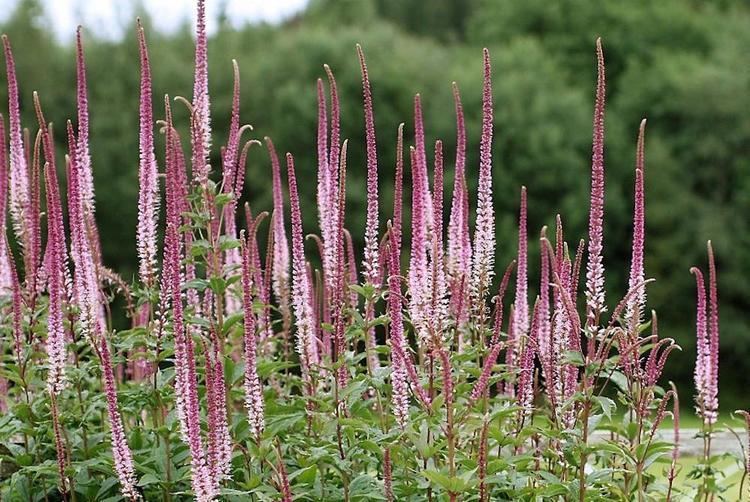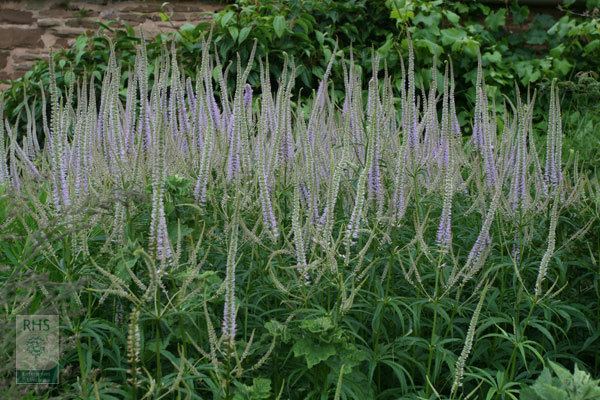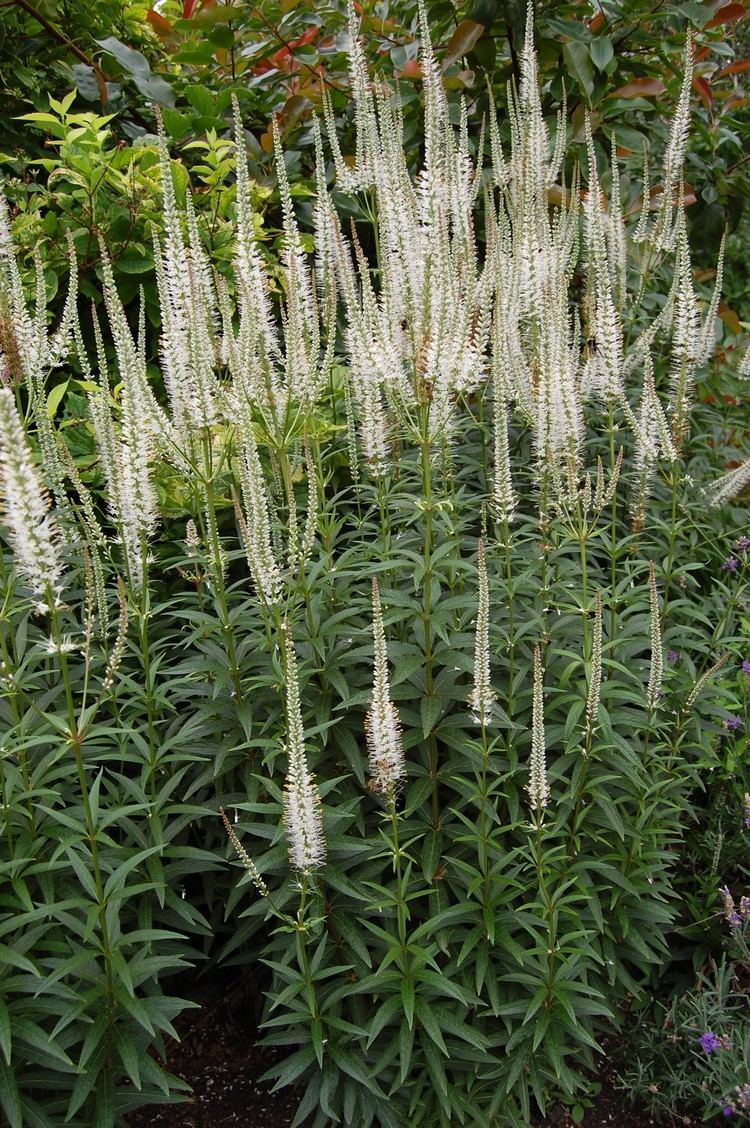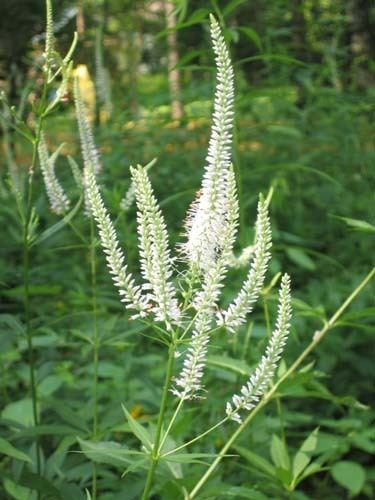Kingdom Plantae Family Plantaginaceae Scientific name Veronicastrum virginicum Rank Species | Order Lamiales Genus Veronicastrum Higher classification Veronicastrum | |
 | ||
Similar Veronicastrum, Eutrochium purpureum, Symphyotrichum novae‑angliae, Speedwell, Bee balm | ||
Veronicastrum virginicum (Culver's root, Culver's-root, Culverphysic, Culver's physic, Bowman's root, black root; syn. Leptandra virginica (L.) Nutt., Veronica virginica L.) is a wildflower native to the United States from southern Maine to northwest Florida to northern Louisiana up through Minnesota and a bit north of the Canada–US border; good for USDA zones of 3 to 8.

Veronicastrum virginicum is an erect perennial herb that grows 80–200 cm in height or other sources say 3 to 7 feet high, though usually it is about 5 feet high. The leaves are serrated and arranged in whorls of 3-7 around the stem. The inflorescence is erect with slender and spike-like racemes to about 9" long and give the flower cluster a "candelabra appearance.". The stamens are crowded and protrude in a brush-like fashion perpendicular to the raceme . The corollas are white and are roughly 2 mm. in length. These plants flower about a month long anywhere from mid-June to late August, depending on latitude.

Culver's root is frequently found in wet to wet-mesic prairies and sometimes moist upland sites. It is also found in a good number of prairie or native meadow restorations.
Culver's root is cultivated as a garden flower in the Eastern and Central United States around its native range. Most native plant nurseries commonly sell this easy and adaptable perennial. Even some conventional nurseries sell this plant, though it is not common yet in American landscapes and gardens. It grows in full sun to part shade and most any well-drained soil. It is easy to dig up, divide, and reset like a good number of standard perennials if they get too large or crowded. It stays as an upright clump and does not spread far. Plants usually stay upright and don't fall over much and don't need staking; however, it is possible for an older clump to do so and it can be pruned down in late May or dug up, divided, and reset to avoid such. This plant does do some self-sowing with its tiny seed. The Lurie Garden in downtown Chicago, Illinois, uses the cultivar of 'Diane' because it is more compact growing.
Culver's root has been used medicinally for liver disorders and constipation. It is a long-time American doctors' remedy for liver congestion with accompanying constipation. It is sometimes considered when compounding a formula for the liver, gallbladder, to treat constipation, colitis, gallstones and hepatitis. It gets its name of Culver's-Root from a certain Dr. Culver who was a pioneer physician of the 18th century and used its bitter roots for purgative purposes. Its medical use can be dangerous.

Veronicastrum virginicum culver s root

